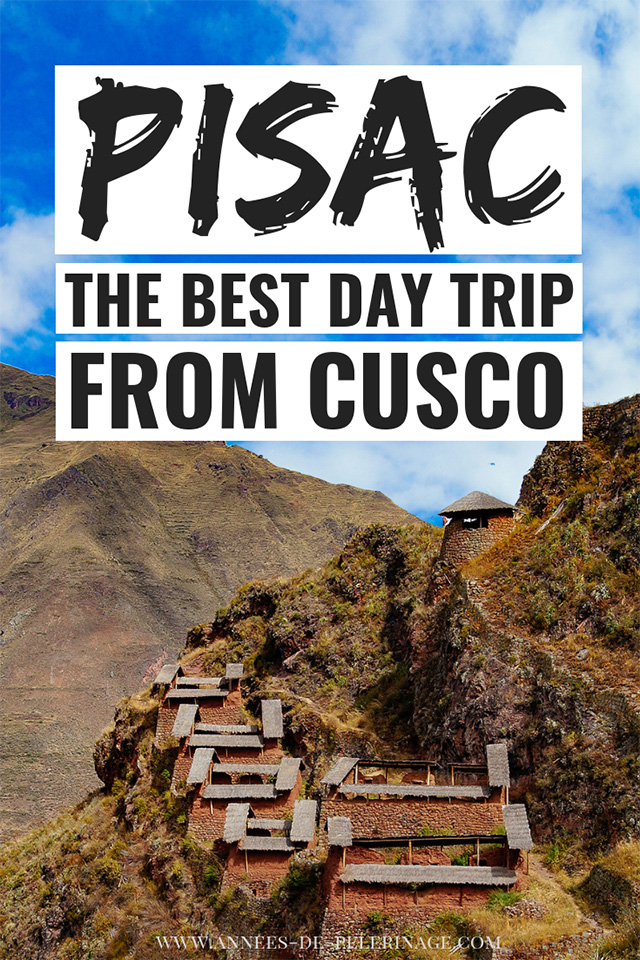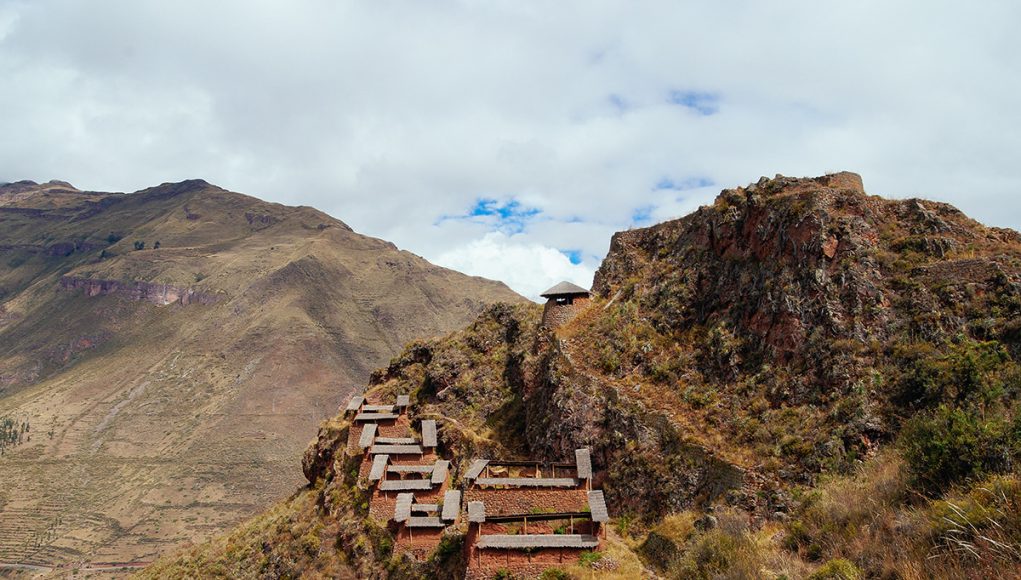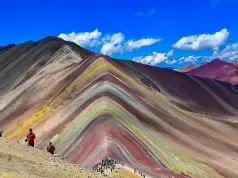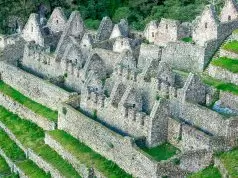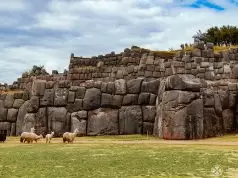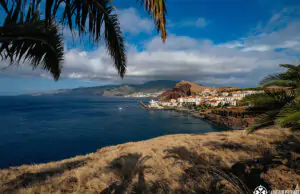Everything you need to know about planning a day trip to the Pisac ruins and Pisac market from Cusco
Are you looking to escape the crowds in Cusco to a wonderful ancient Inca ruins that almost rivals Machu Picchu? Then you should definitely consider a day trip to Pisac.
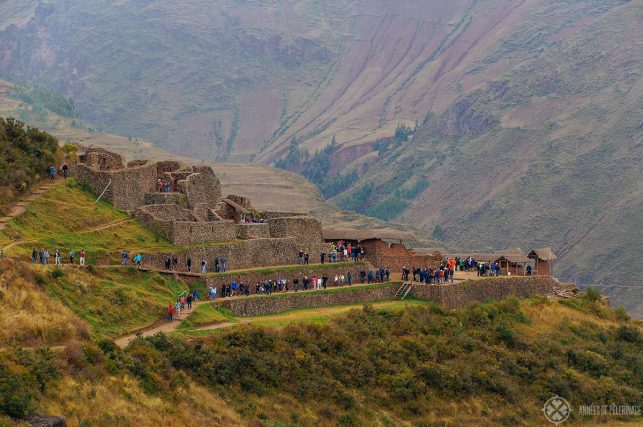
The quaint little town lies some 30 kilometers northwest of Cusco, the capital of the Incas. It marks one end of the famous Sacred Valley with the famous ruins like Ollantaytambo (read my guide), Sacsayhuaman (read about it here) and of course Machu Picchu (here’s my guide) at the far end.
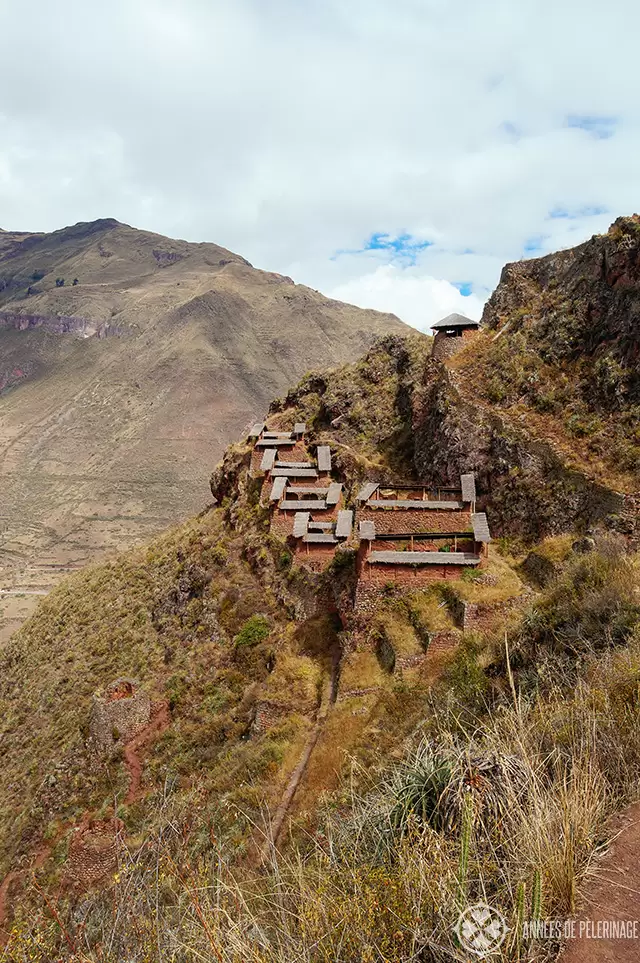
Pisac, sometimes also spelled Písac, is home to a famous Inca fortress AND a huge market that happens every Sunday (but will be lively throughout the week as well).
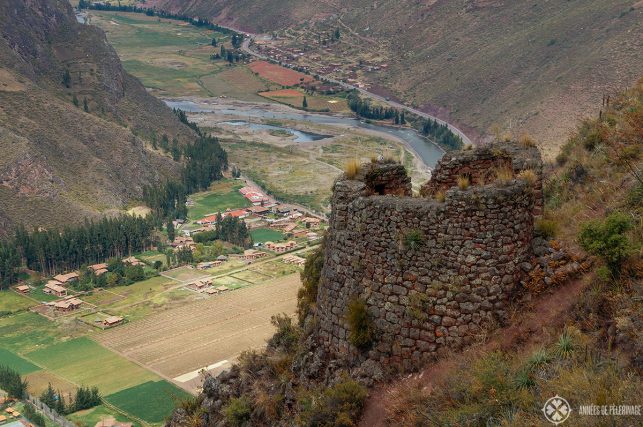
To me, Pisac is one of the best day trips from Cusco and easily among the top 20 tourist attractions in Peru (check my guide to find out the other 19 amazing sites in Peru ) you can easily spend a full day exploring the town and the imposing ruins around.
Anyways, here is my Pisac travel guide:
Note: I earn a small commission from purchases through the links in this article.
Visiting the Pisac market (& old town)
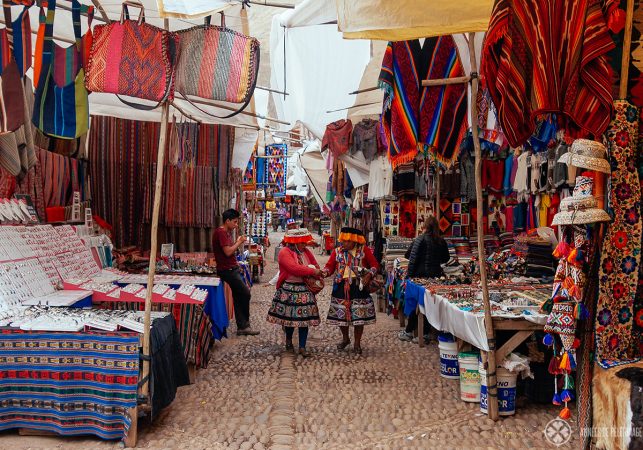
For many tourists, the Pisac market is the most important reason to visit the town. Each Sunday, the whole old town transforms into one big market selling everything from groceries to souvenirs. Looking for a nice Peruvian poncho or some alpaca wool knitwear? Pisac will be the place you’ll find it.
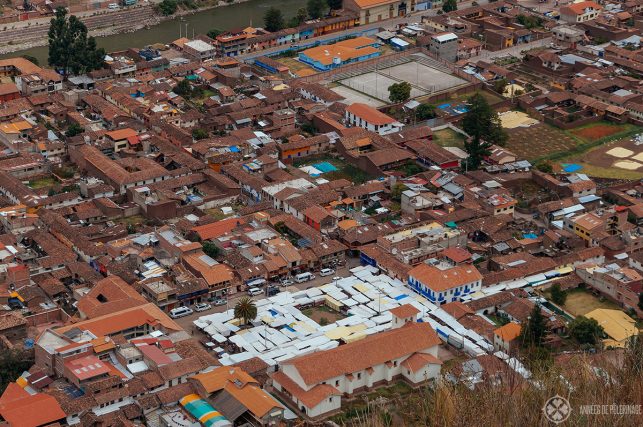
I want to be honest with you: You’ll basically find the same souvenirs in Pisac as on the huge market right behind the train station in Aquas Calientes (which you will pass through on your way to Machu Picchu). It is, all things considered, quite a touristy thing. But the sheer size of it will bedazzle all your senses and it’s so much fun to walk along the endless corridors of colorful booths.
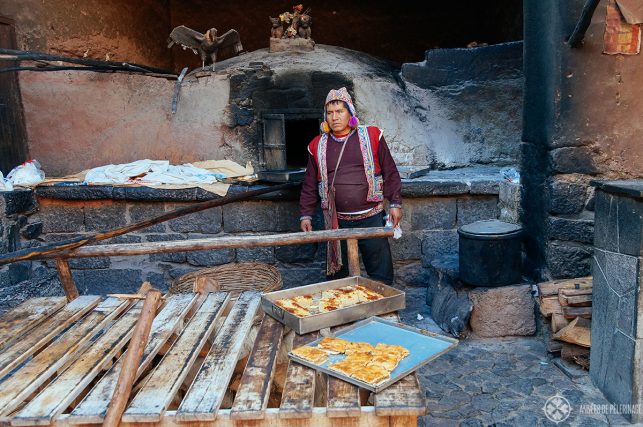
In between, you’ll find little stalls selling authentic Peruvian street food and tiny bars and restaurant. Pick whatever you prefer, but pick one, as you’ll be amazed by the quality of the food (but by the time you get to Pisac you’ll probably already know that eating simple things as Peruvian potato or corn is a feast for the senses).
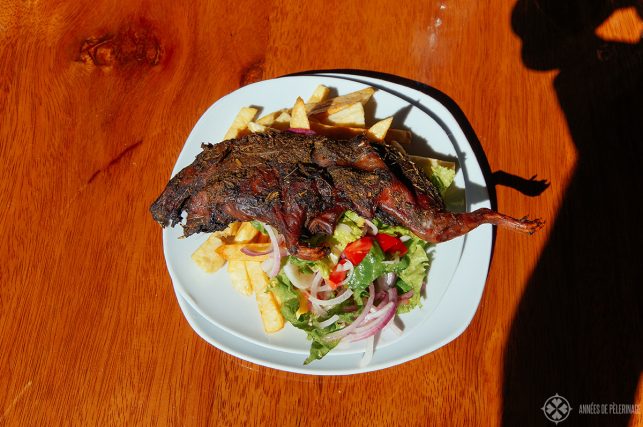
If you want to sample the (in)famous backed cuy (Guinea pig), you’ll find plenty of restaurants throughout Pisac. What does it taste like? To me, it tasted a lot like duck. My dad loved it, I sort of couldn’t stomach eating it (as it is served whole!), but that’s something for you to find out. There are excellent vegetarian options as well.
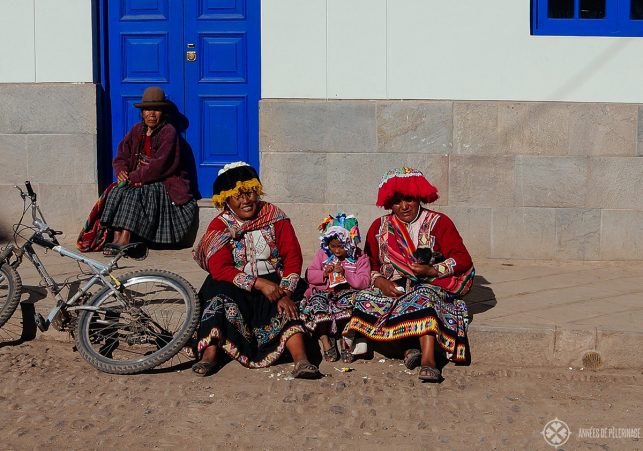
You should also reserve some time for walking around the rest of the old town of Pisac. Depending on your itinerary, this might be your only chance to sample the laid back Andean way of life in a small town setting. Cusco or Aquas Calientes is so much different, while Pisac retains some of its old charm.
When is market day in Piscac?
- The famous grand market opens up every Sunday
- Tuesdays and Thursdays are also market days
- Every other day of the week it’s “just” a smaller (but still huge) market with the permanent souvenir booths
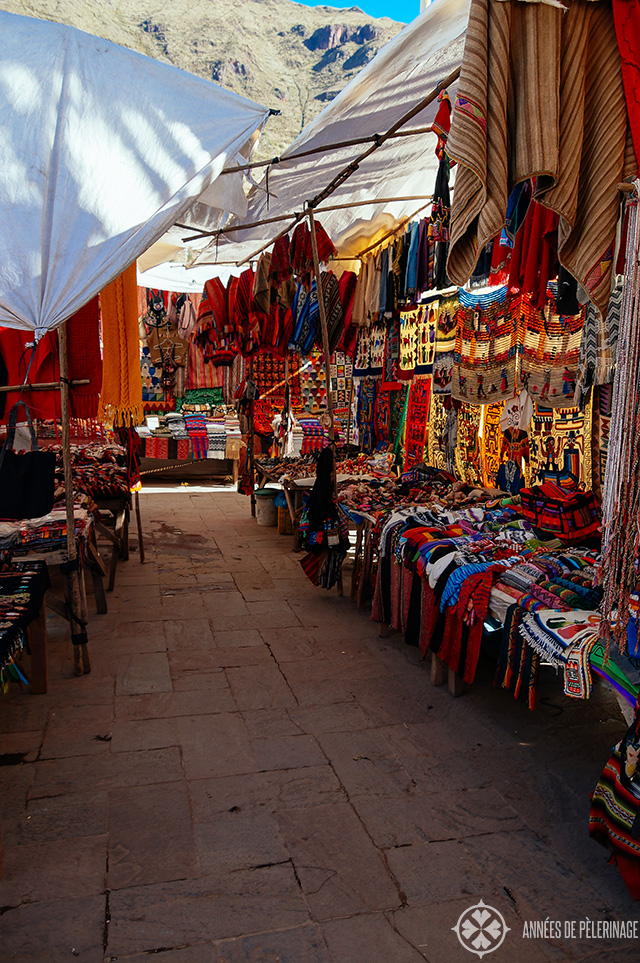
Note: I recommend you to visit the market after your tour of the ruins, as it involves quite some climbing and you don’t want to burden your day pack with heavy souvenirs (or your stomach with that yummy street foo).
Hiking the Pisac ruins
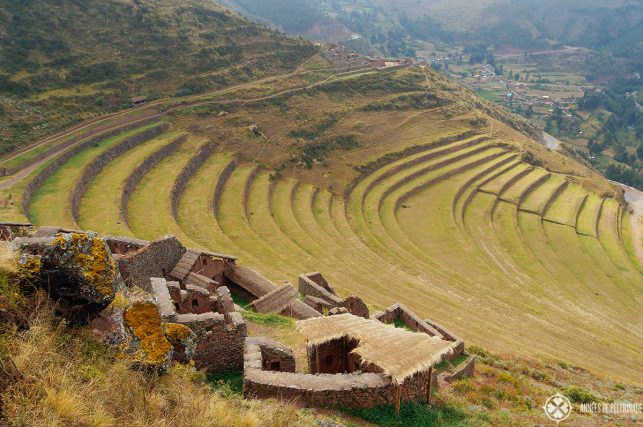
I recommend you to grab a taxi from the Pisac old town up the ruins. They will charge you quite heavily for it (probably around10$) but hiking all the way to the top of Pisac will be quite strenuous given the high altitude of the town 9,750ft / 2,972m). The ruins itself are considerably higher (10,800 ft / 3,330m). If you want to save money, you can, of course, hike both ways.
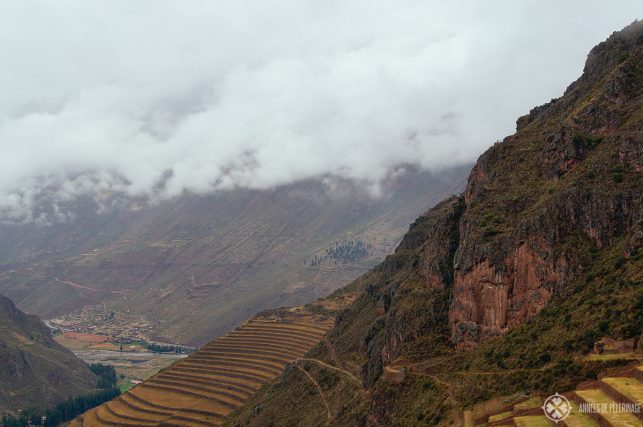
The ride to the top is already quite fascinating as you will be passing an unbelievable length of ancient agricultural terraces forming sweeping curves across the stark landscape. From here, you will pass a little booth that marks the entrance of the ruins and you are ready to go.
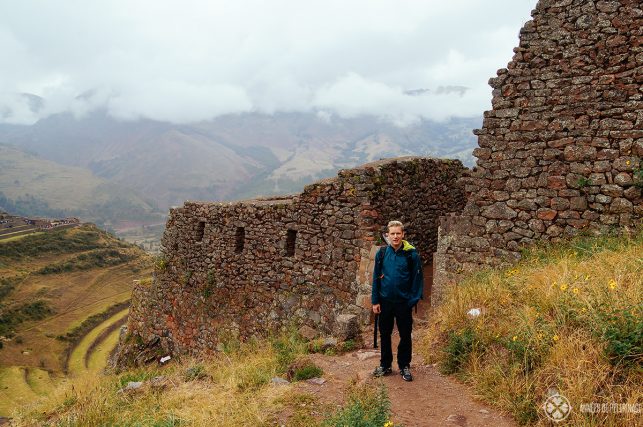
It is quite important to realize that Pisac is not one ruin, but a complex archeological site with different areas of interest. There are a lot of tourists who take only take a tour of the section right behind the entrance and believe that was it.
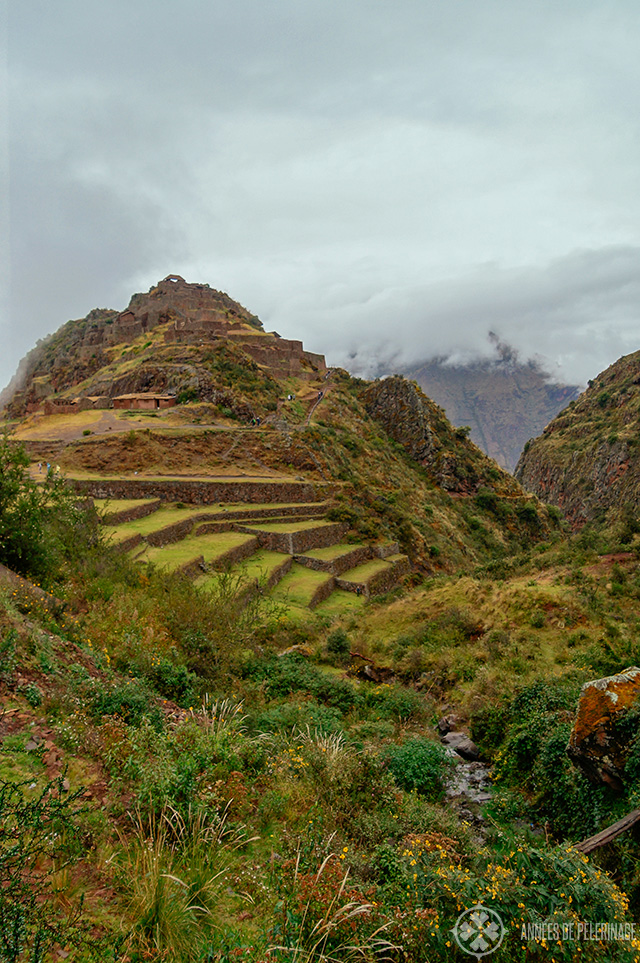
Granted, the main fortress of Pisac (often called Qalla Q’asa), with its sprawling urban sector, is magnificent. It reminded me of Machu Picchu, situated on a mountain ledge as it is. Can you spot the similarities
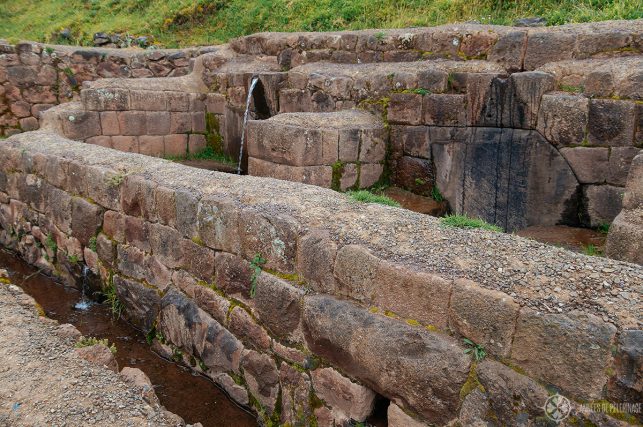
A level pathway will lead you from the first royal residences to a little hilltop fortress with thatched roofs. These roofs are later additions to protect the walls below, but still, give you a good impression of what it must have once looked like.
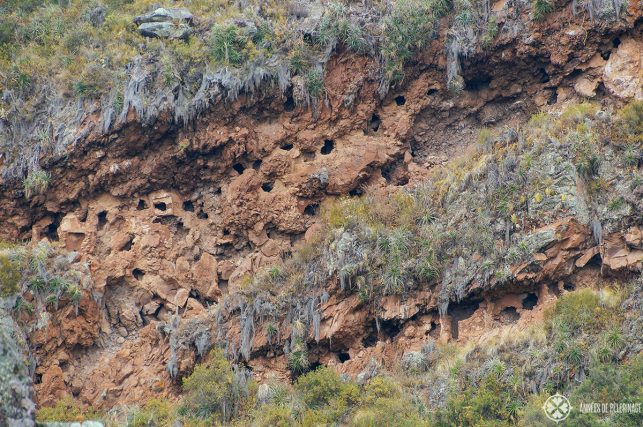
Definitely make sure, to walk to the hills on the far back, as this is an ancient Inca burial site, also known as Tankanamarka. If you look closely, you will see thousands of red adobe caves. All these are (pillaged) tombs.
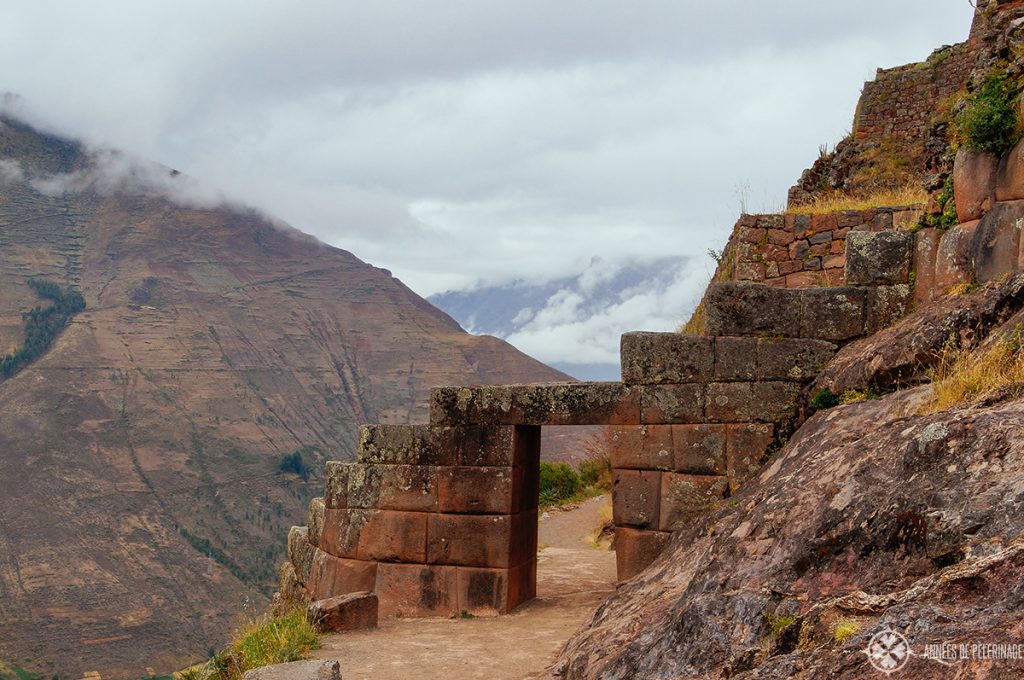
And this is the point where most people on a day trip from Cusco to Pisac turn around. Don’t be that guy. You will definitely believe you’ve seen it all, and that small pathway leading through a beautifully carved door probably looks a bit like a dead end. Why proceed? The ruins and the terraces were already so stunning, eh?
Well, that’s because you are about to miss out on the main attractions, further beyond lie three other ruins: The Inti Watana of Pisac, The Qalla Q’Asa and the Kinchiaqay
The Inti Watana of Pisac
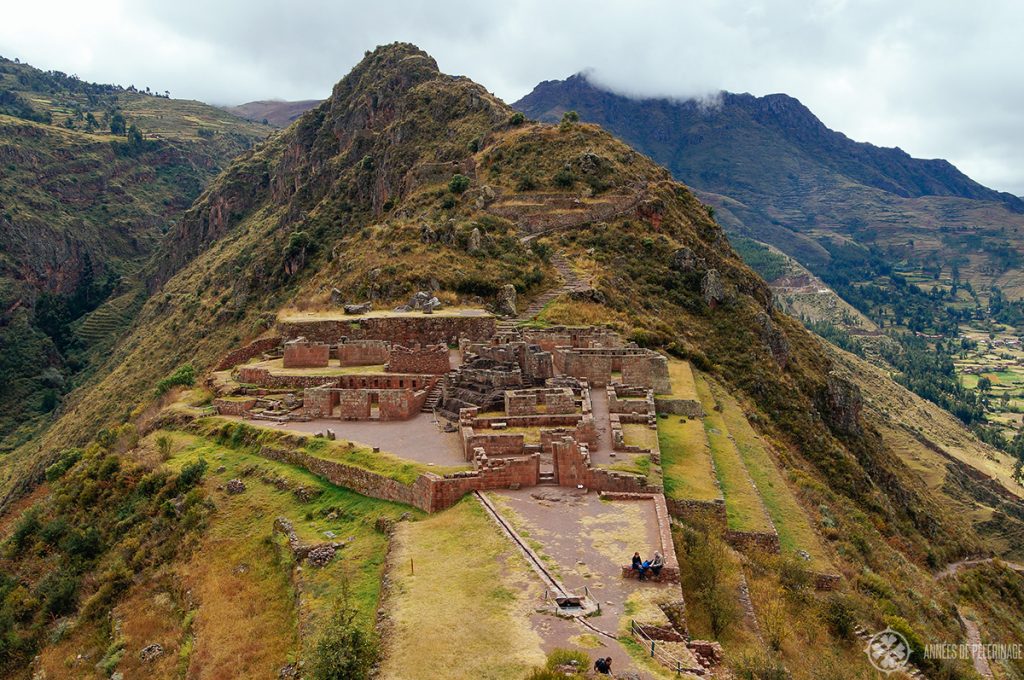
The first site you will come across after a downhill hike of about 15 minutes is the so-called Inti Watana or Intihuatana – a special religious sector with a temple to the sun. Inti Watana literally means “hitching post for the sun”. There is a famous (and still intact) structure in Machu Picchu (read about it here) that served a similar function.
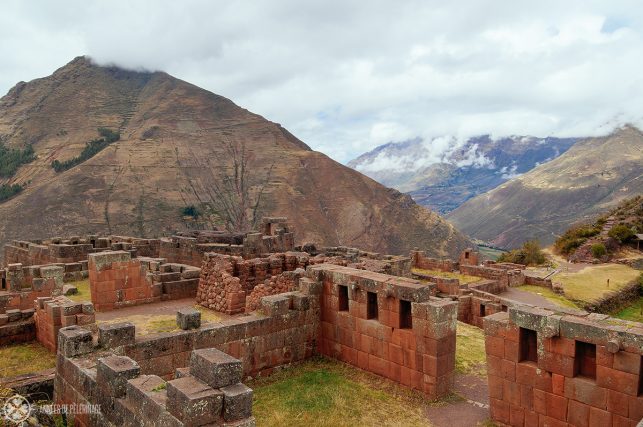
You will instantly notice the different architecture. While the ruins you saw first all shared the same crude stone walls, this section of Pisac boasts the finest masonry the Inca architectures produced. Sheer seamless walls of granite form a ritual center of well-balanced proportions – all laid down in a precise rectangular grid. Only the temple of the sun is marked by round walls
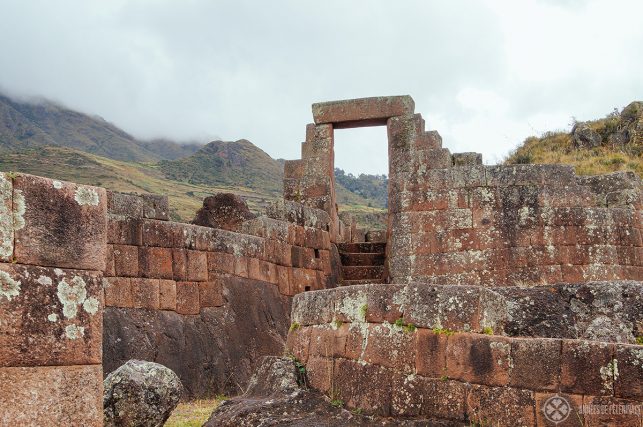
A gargling fountain still fills a small pool at the end of this temple district, where once sacred rites like in Tipon (read my guide) must have been held.
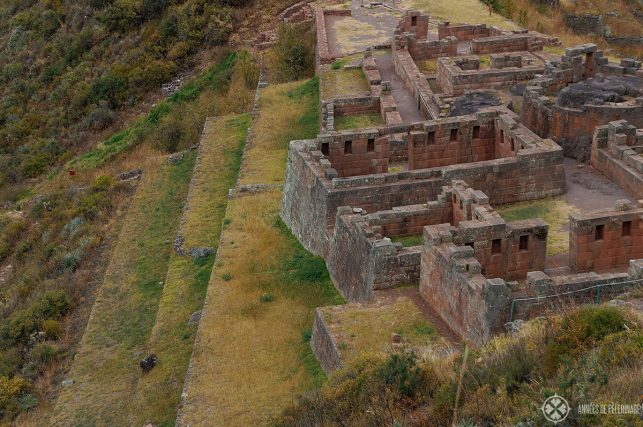
It’s not hard to imagine how gold must have decorated these impossibly perfect buildings.
The P’isaqa
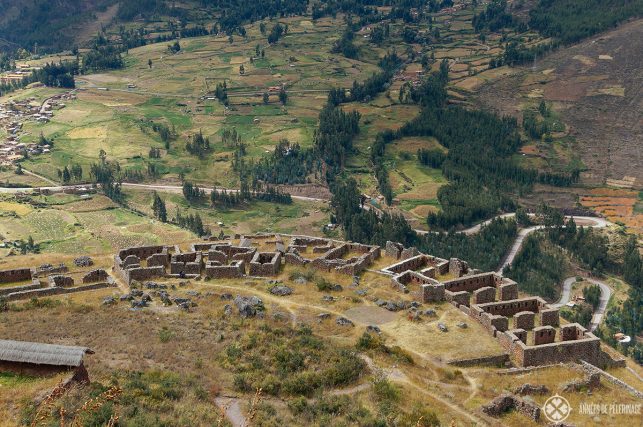
Right below the Inti Watana, you’ll see another set of ruins precariously balanced on a ridge above the valley. This part is known as the citadel, even though it probably did not serve a military function at all.
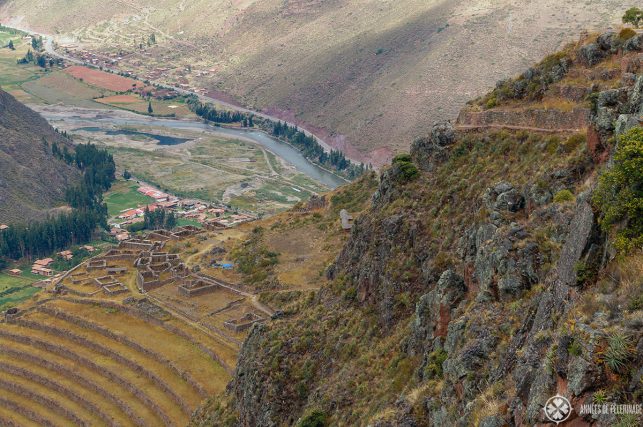
Still, it’s a beautiful vantage point you might want to check out. As the P’isaqa ruins are fairly similar to what you’ve already seen at the start of the train, it might be excusable to just watch it from above.
The Kinchiraqay
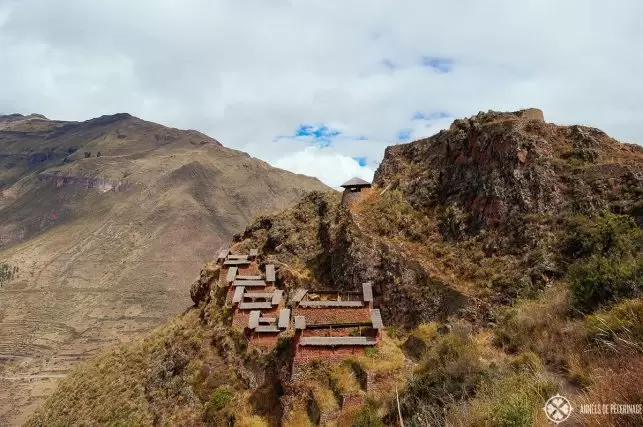
Just a very short walk from the Inti Watana you’ll arrive at my favorite part and the reason I would readily visit Pisac over and over again. The Kinchiraqay – or the granaries. The second I walked over that last little hill and saw the red adobe structures clinging to the hill wowed me like no other sight in Peru.
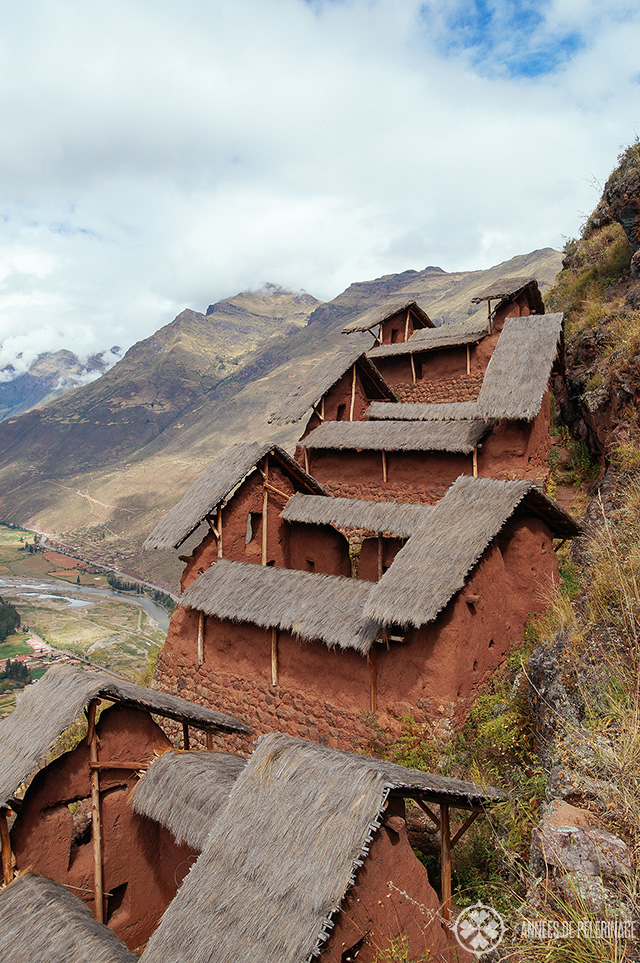
I’m not sure if pictures will do justice to the ancient ruins, but this place was truly special. Very few tourists climb this far and chances are high you will be totally alone.
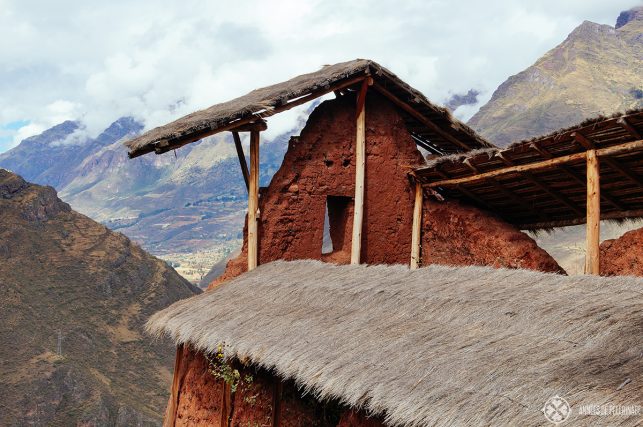
The granaries once used to store the maize and quinoa the verdant terraces must have produced seem to hold on to the steep hillside for dear life. It’s so utterly pretty from afar.
Mind you, from up close, it’s just a bunch of huts with partially thatched roofs, but the whole setting really spoke to me.
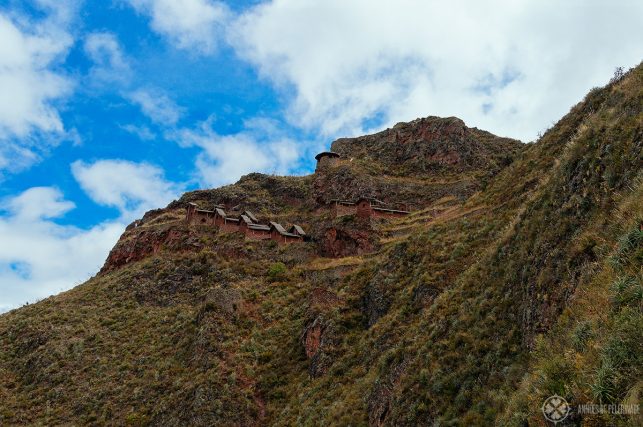
By the way, this is one more reason why I recommend you to hike down (and not up), as the views are so much better. You seldom look back. It’s not that you would miss the ruins, but you would miss the most epic views.
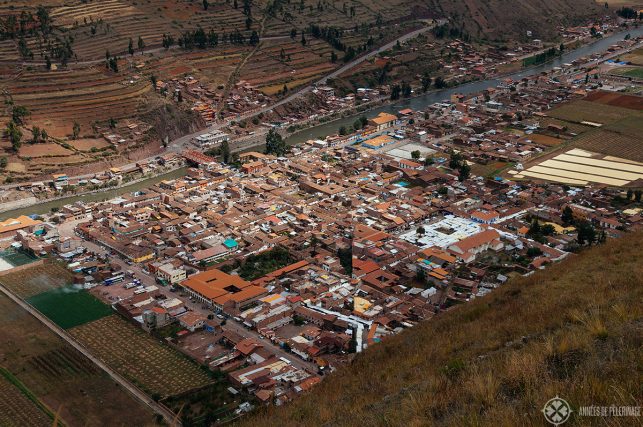
Once you quit the Kinchiraqay the rest of the hike down is rather unimpressive. You will pass more terraces, but otherwise, there are no more ruins to explore. The views of Pisac from above are quite lovely, though!
You’ll enter Pisac village from the back, though industrious vendors will greet you with booths selling souvenirs.
Oh by the way: In case you are looking or other amazing Inca ruins, don’t forget to read my guide of the top 10 archeological sites in Peru (besides Machu Picchu)
How long does it take to hike Pisac?
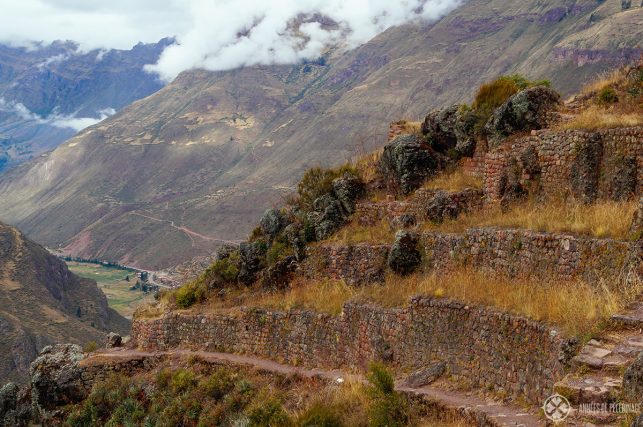
The whole tour will take between 5 to 6 hours – depending on your fitness. You can shorten that time by taking a taxi one way or both ways, though as stated above I do not recommend it.
The elevation of Pisac is 9,751 ft, while the ruins abutting the mountain above are some good 1,100 ft above. So, you will be covering quite some terrain during that hike.
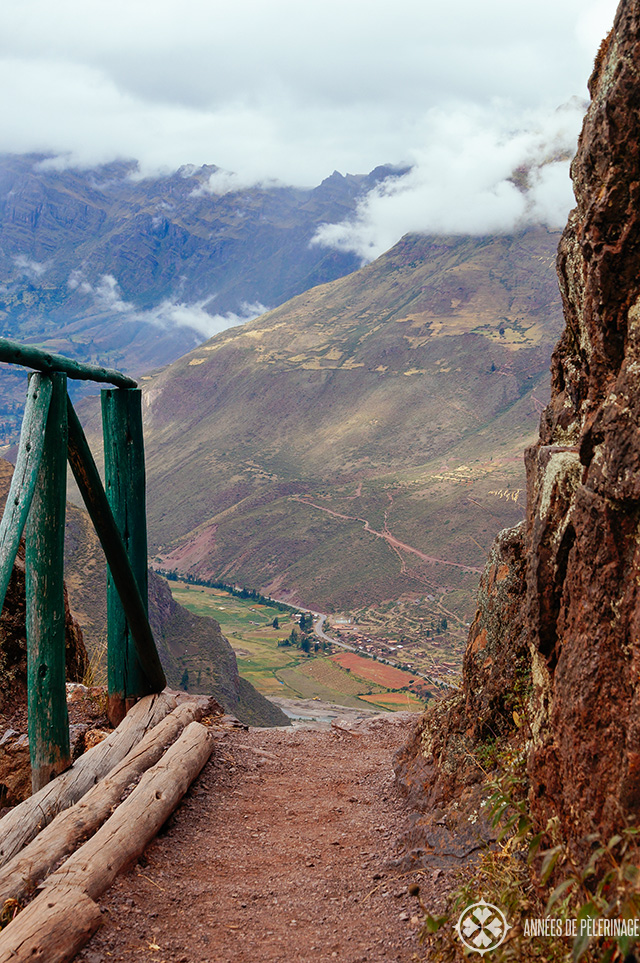
Please bear in mind that the hike up will be quite taxing. Definitely bring enough water (there are NO shops at the top) and wear adequate sun protection. Do not underestimate the height. Hiking down is, for many reasons, to way better and rewarding option! True altitude sickness should be no problem, though most people unaccustomed to the height will notice how exhausting it is!
You will not need proper hiking shoes, as the paths are very well maintained, but some sturdy mountain trainers are recommended. For more details, please read my Peru Packing list.
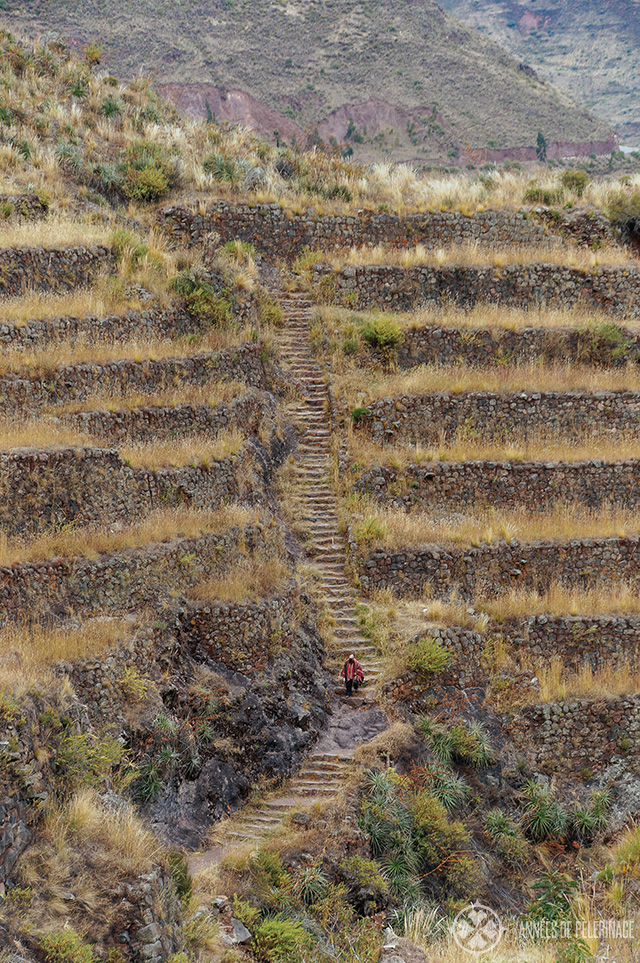
Pisac ruins entrance fee:
Entrance fee for tourists is 70 soles. As an alternative, you can get a boleto turistico (130 soles) (here’s the official website with more information). If you plan to visit other ruins within the sacred valley, then this tourist ticket is very worth it. Note: Maras salt ponds are not covered by the boleto turistico
How to get to Pisac from Cusco
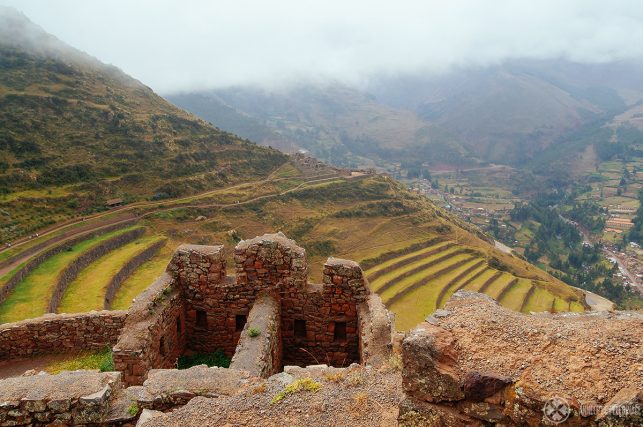
It’s fairly easy to get to Pisac from Cusco, especially as it’s only around 30 kilometers. Despite the short distance, you should calculate around 45 minutes up to an hour to get there.
Two reasons: First, getting out of Cusco takes a bit longer as the traffic situation is sometimes a bit difficult, and you will be crossing into another valley, so you are not exactly driving along a motorway.
The easiest and most comfortable way is grabbing a taxi in Cusco to bring you right to the very top of Pisac ruins. Ask your hotel to arrange for a driver and let them negotiate a good price. On your way back, simply grab another taxi back to Cusco.
As a viable budget alternative, you can also make your way to Calle Puputi and take a colectivo. Taking one of the community minibus taxis will be dead cheap (around 4-6 soles). They will usually drop you outside of Pisac and you should mark the drop-off spot, as this is the place where you will have to catch your colectivo back.
If this sounds too much of a hassle, you can go on a guided tour (like this one). Please be careful when you book them. Not all Sacred Valley tours that got Pisac on their list actually visit the ruins, some just do the market. These tours usually don’t go hiking down to the temple of the sun & beyond. If that’s what you got in mind, a private tour organized by your hotel is probably the best option.
Where to stay in Pisac
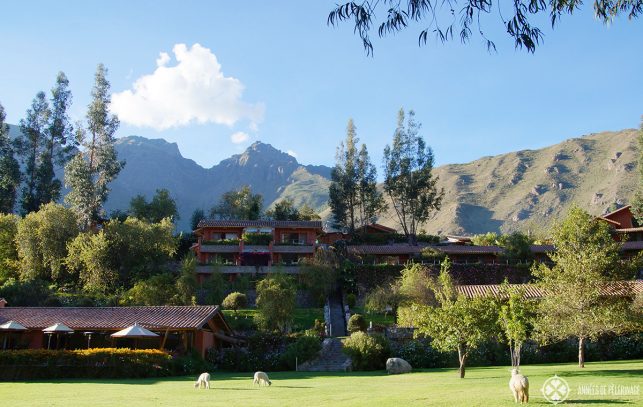
Pisac is best visited on a day trip from Cusco. If you do want to stay a night, then there are not that many options in town. Actually, there is just one hotel worth its name. The Pisac Inn (click for pictures & prices) boasts three stars and is probably a nice budget option.
Other than that, you only got a couple of hostel style guest houses (like the Pisac Inca Guest house).
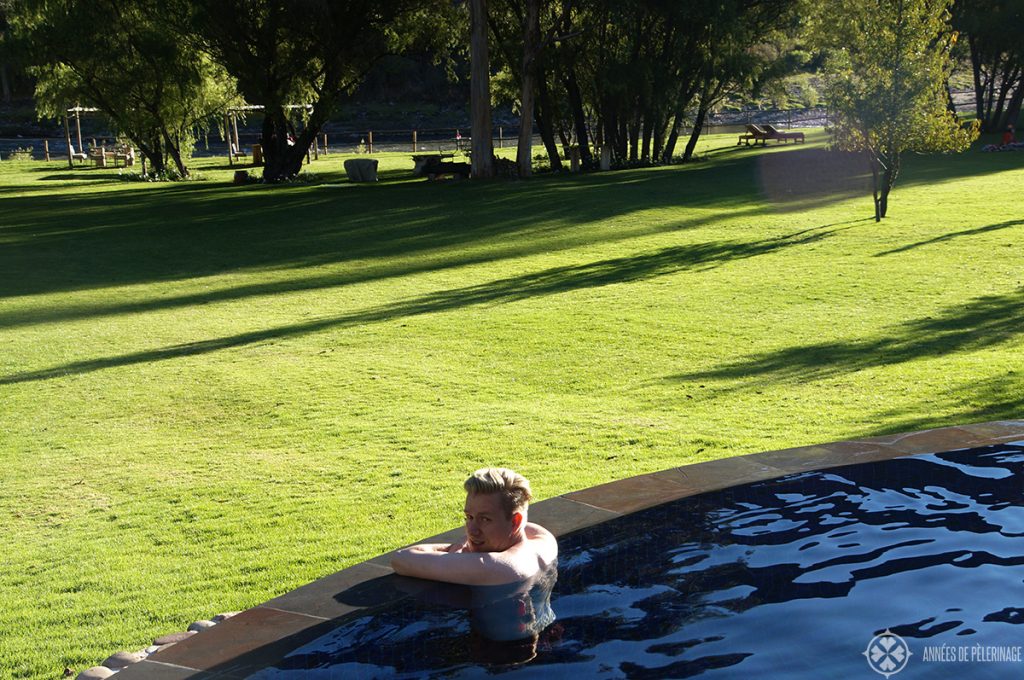
Instead, I do recommend you to find a good hotel in Urubamba. The Stunning Tambo del Inka come to mind, or of course the Belmond Hotel Rio Sagrado (<-where I staid on my last trip).
Naturally, there is also the Inkaterra Hacienda Urumbamba, which is a luxury traveler’s favorite. All these hotels will be able to arrange private day trips to Pisac.
So, this was my little travel guide to Pisac ruins & market. Got any questions? Don’t hesitate to comment below!
